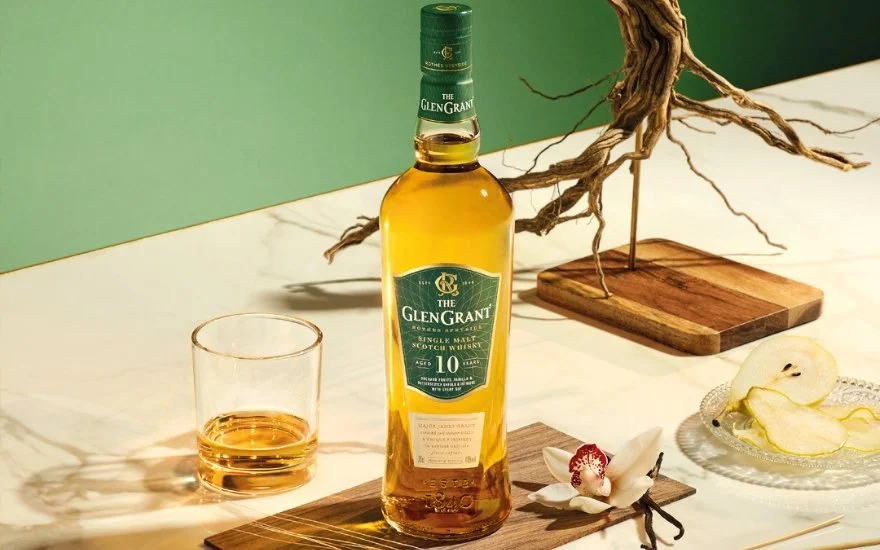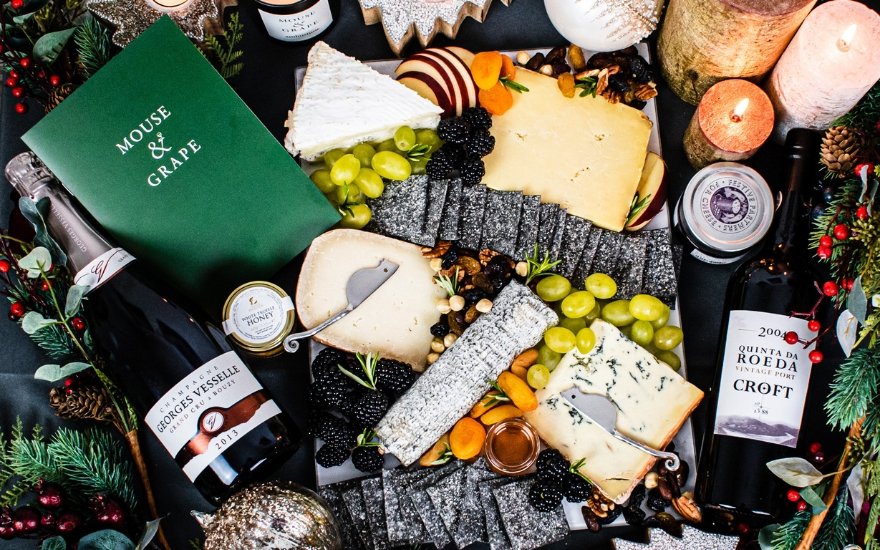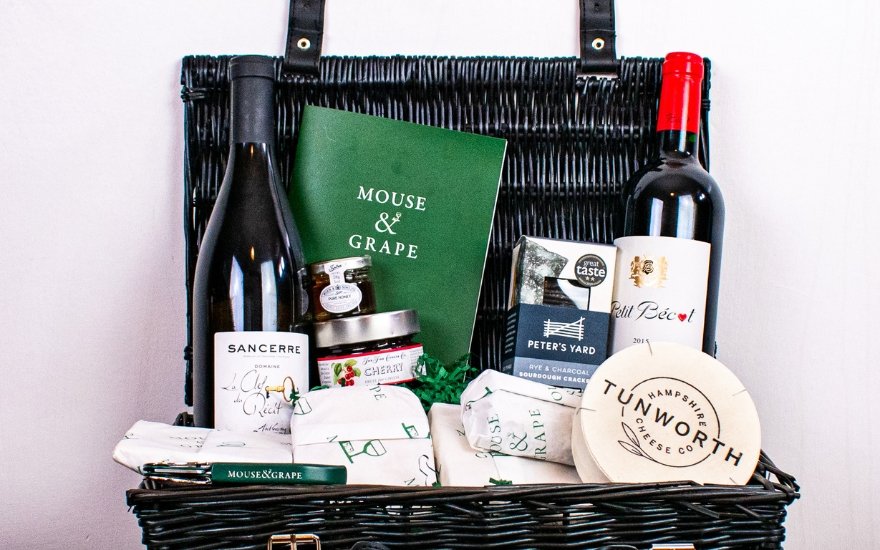To experience the best flavours in your cheese and wine I would recommend avoiding strongly flavoured food and drink such as coffee before you taste as this will affect your ability to taste simple and complex flavours. It is useful to have good palate cleansers to hand. These include water, bread, crackers and apples to use between trying different combinations. Cheese and wine must both be served at the correct temperature to allow them to reach their most delicious potential. Different wines should be served at different temperatures. Typically white, rosé and sparkling wines are served chilled. Reds are typically served lightly chilled or at room temperature. It’s important to remove your cheese from the fridge, and its wrapping, 1-2 hours before serving. If your cheese is still cold when it is served, its flavour will be dulled.
THE LOOK
Wine: Hold your glass at an angle to identify the colour and the intensity. Is it white (lemon, golden or amber), red (purple, ruby or garnet) or pink (salmon or orange)? Pale, medium, or deep colour? Is it clear or cloudy? For the best results, examine your wine held against a white piece of paper and in bright natural light.
Cheese: Every cheese tells a story through its appearance so take a moment to look closely at the cheese. Examine the colours of both the exterior (the rind) and the interior (the paste). What type of cheese is it? Hard, soft or blue? Are the colours of the paste consistent and even throughout the piece? Look at the texture of the rind - are there any bumps, cracks, patterns or coloured moulds? Does the cheese have holes or salt crystals? Compare the centre of the cheese to the cheese next to the rind: what are the differences, or are they the same? Cheese loves to grow mould, so if your cheese has spent some time in the fridge you may find some surface mould has developed. Simply trim a thin layer off the surface – the cheese beneath will still taste exquisite. On the subject of mould, artisan cheeses can look very different to supermarket cheese: the cheesemakers focus on flavour over appearance. For example the goat’s cheese Rachel is washed regularly in a brine solution as the cheese matures. This gives it a pinky/grey rind with occasional orange and yellow spots which are naturally occurring and safe to eat.
THE AROMA
Wine: Put your nose a little way into the glass and take a big inhale, the deeper the better! What does the wine smell like? Don’t worry if at first you can’t smell much, you’ll quickly be able to identify more aromas with practice. First identify broad categories (like berries) then try to pinpoint the aroma (blackberries). You may smell: fruits, such as green apples, pears, cherries or blackcurrant; spices such as cinnamon or vanilla; earthy smells like soil, grass, hay; or woody aromas like oak, pine, or cedar. Now swirl the wine in your glass. This will introduce more oxygen to the wine, which will increase the flavour intensity. Can you detect the existing aromas more strongly, or even notice new aromas?
Cheese: There are a few similarities in the way we describe wine and cheese flavours. Both can have aromas that are lactic, earthy, grassy, nutty or floral. Pick up the cheese and bring it to your nose to take a big sniff. Some cheeses like Époisse or Roquefort will be easy to smell! What can you smell? Cheeses can smell animally, yeasty or mouldy. Can you smell grass or flowers? Can you smell a “farmyard” smell?
THE TEXTURE
Wine: Take a small sip of your wine but don’t swallow it yet! Let it sit on your tongue and warm the wine making it easier to detect. Then gently swish it around your mouth to get the full effect. Ask yourself:
What is the mouthfeel like (water, semi-skimmed milk or creamy)?
Is your mouth filled with saliva (telling us the wine is high in acid)?
Cheese: The texture of cheese plays an important role in the evaluation of it. Take a small crumb of the cheese you are tasting and rub it between two fingers. Notice how easily (or not) it smears. Take a small bite, and let it sit on your tongue for a moment. Notice how firm or soft the cheese feels. As it warms up it will soften a little more. Now slowly and mindfully chew it. Is it soft and pliable? Does it melt in your mouth? Is it a hard cheese that breaks down into small chunks as you chew? Does the cheese coat the inside of your mouth?
THE FLAVOUR
Wine: Take a second sip and employ the “slurp” technique to aerate the wine (sucking air past your front teeth with the wine on your tongue). This will help you notice the flavours more easily. Ask yourself:
What flavours do you taste?
Can you taste the aromas you detected or have they changed?
Is the wine sweet, tart or bitter?
Are any elements standing out in a bad way, meaning the wine is unbalanced? (Acidity, tannin or sugar, for example?)
Swallow the wine and breathe out. Do the flavours change?
Do they linger or do they disappear quickly? This is known as the “finish”. Great wines have a pleasant finish that lingers and does not vanish quickly.
Cheese: When tasting the cheese for the first time think ‘less is more’ and take a small bite which will be easier for you to move around your mouth. Let it sit in your mouth for 5-10 seconds which is enough time for the cheese to warm up and release more powerful flavours making them easier to detect. The flavours in cheeses change and evolve the longer you keep them in your mouth. You may notice that a cheese might start being very salty but as you continue to chew it becomes sweeter and the diary flavours are more pronounced.
How to taste cheese and wine together




















































